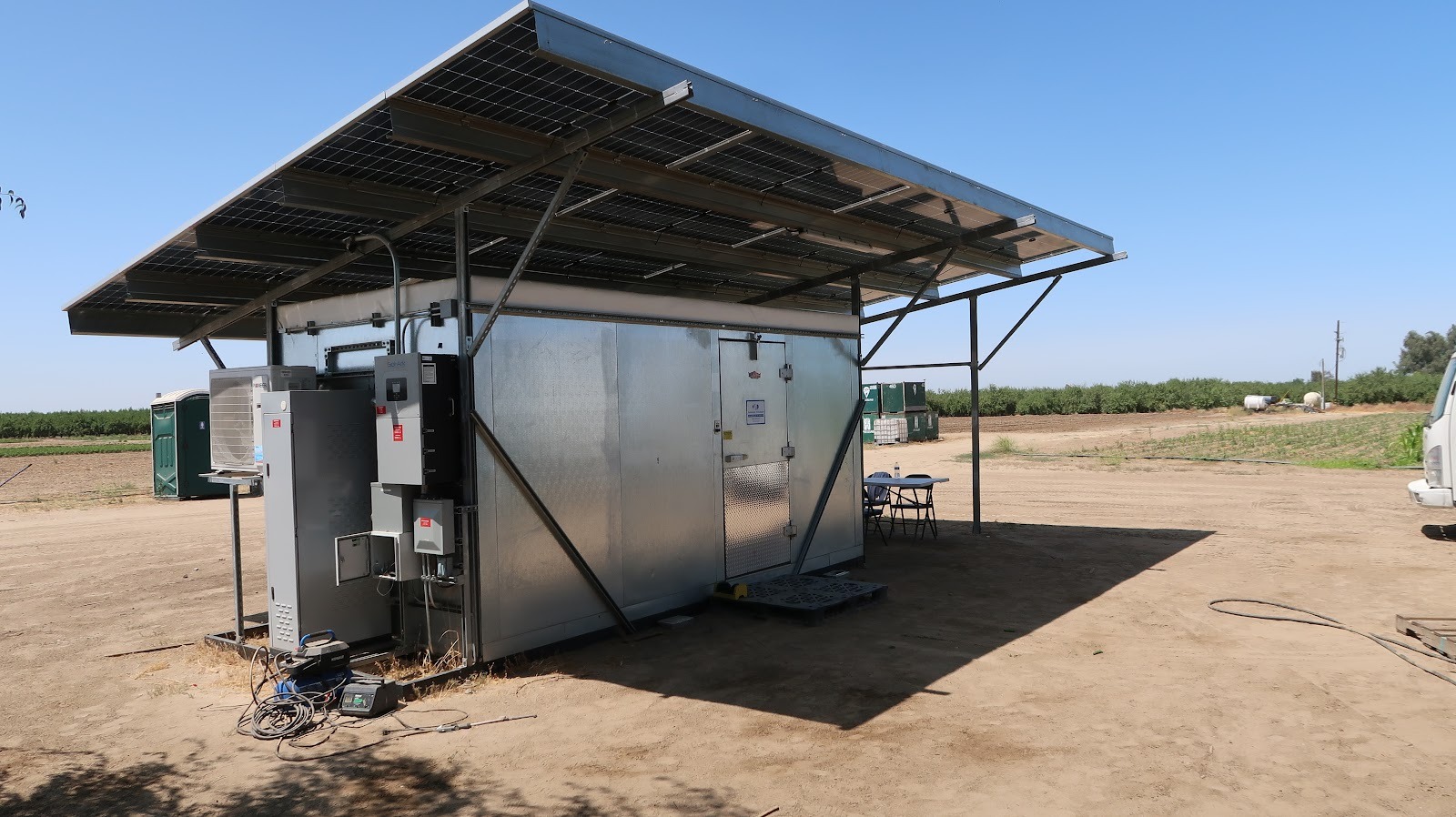California FarmLink is pleased to announce the completion of the first year of a new pilot program intended to help small-scale farmers lead the transition to climate-smart cooler technology on farms. The SolarFresco™ program helps farmers with limited resources use solar-powered coolers to build wealth, profitability, and resilience, while lowering their carbon footprint. As we begin a second year of this innovative program, we are seeking to broaden its base of support and illustrate how state policies can support resilient food systems.
SolarFresco strengthens food systems by helping farmers reduce food waste and dependence on fossil fuels, and build equity in farm assets. The coolers also increase farm profitability by allowing farmers to access more profitable direct-market opportunities and reduce their dependence on wholesale markets through coolers owned by large distributors. Importantly, the coolers allow farmers to manage their time more efficiently because they do not need to transport the crop to an offsite cooler as soon as it is harvested.
“We used to have to deliver every day,” reports Javier Cruz, SolarFresco participant. “Whatever you harvest today, you deliver at the end of the day. We can’t store here [in Madera County] because it’s too hot. What we’re able to do now…harvest it and put it in the cooler, then every other day we deliver. Now we're saving $300 [on fuel]…weekly.”

Solar-powered coolers also lower a farm’s carbon footprint by minimizing delivery miles and decreasing reliance on costly grid-based conventional energy sources.
Over the past 18 months, FarmLink has installed solar coolers on six small farms in Central California, from Watsonville to Madera. In order to qualify for a cooler, farmers must demonstrate a commitment to sound financial management and participation in additional education and technical assistance programs to help them use the coolers for maximum impact. FarmLink aims to expand the program using investments and grant funds, and to demonstrate impact in support of public investment in renewable energy on small farms.
“Solar-powered coolers are revolutionary for small farmers with limited resources,” says Reggie Knox, CEO of FarmLink. “These off-grid energy systems are allowing farmers to grow sustainably and cope with increasing heat. SolarFresco reduces food waste, increases farm profitability, and creates more resilient local food systems.”
Solar-Powered Cooling is Critical to Farm and Food Sustainability

Cooling infrastructure is a costly investment beyond the means of most small farmers, but fresh produce requires immediate cooling and cold storage in order to maintain quality. SolarFresco is exploring the impacts of decentralized assets that can support resilient food systems. With their own coolers and energy sources, farmers can mitigate risks and inefficiencies.
Most small farmers either drive their product to market as soon as it is harvested or sell within hours to a local shipper who cools, packs, and ships for wholesale markets.
Farmers who drive their product to market may realize a higher price than those who sell to local shippers; however, they bear greater transportation costs. This reduces net profit and can result in food waste. For the smallest farms with the fewest workers this strategy leads to excessively long days harvesting, packing, and then driving long distances – a model that is unsustainable at best and dangerous at worst.
Farmers who sell to local shippers often do so under restrictive contracts that limit their ability to sell elsewhere. Shippers may also refuse delivery at peak season resulting in lost revenue and wasted food. With an on-site cooler, a farmer can store their harvest and make choices about where and when to sell; for example, they can store product on-farm and then transport it to sell directly to consumers twice a week at a farmers’ market where they receive a higher price. On-site coolers also improve product quality, reducing the chance that deliveries to distributors will be rejected, and increasing the farmer’s chance of earning and maintaining long-term customer relationships at farmers’ markets or in direct-to-restaurant or retail sales. This one strategic investment can transform a farm by enabling more efficient use of time and labor and opening access to more profitable markets. Farmers can also borrow against the value of the cooler to increase working capital or make additional energy or labor-saving investments in their business.
Design and Installation

The off-grid, walk-in cooler boxes are 8 x 16 feet with 5-inch-thick insulated panels and floors, resulting in an R-40 rating, a measure of resistance to heat flow. A 19 x 30 foot, 20-panel, bi-facial solar array above the cooler unit generates over 10KW of solar power stored in 5-kilowatt-hour lithium iron phosphate batteries resulting in 30-kilowatt-hours of storage capacity. Cooling is achieved with a highly efficient 24,000 BTU mini-split heat pump. The solar array provides shade for the cooler and an adjacent work area for packing and loading.
Farmer Selection and Technical Assistance
To qualify for a cooler, farmers must meet criteria for three years in business, limited income and wealth, and legal rights to the land where the cooler will be located. The coolers are leased to the farmers for 18 months, and then offered for sale. Farmers have the opportunity to earn lease or purchase payment forgiveness by participating in education and technical assistance including support with bookkeeping, income taxes, long-term planning, and assessing the cooler’s performance.
"Agriculture needs renewable energy," says Reggie Knox, "and SolarFresco creates new efficiencies for small farmers who are the foundation of local food systems in California. We all value fresh, healthy foods. Building resilient food system infrastructure is a powerful investment in the wellbeing of farmers and their communities."
SolarFresco is made possible with the generous support from the 11th Hour Project, a program of the Schmidt Family Foundation. In the coming months, farmers and staff will continue to assess the impact of the pilot phase, and work to grow support for the program and expand access to the technology. Farmers, funders, and impact investors are invited to get in contact with us to learn how to get involved.







